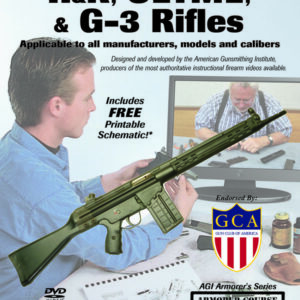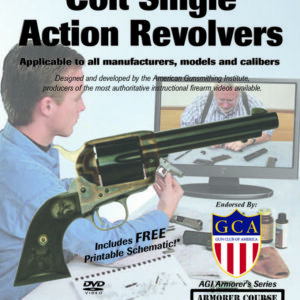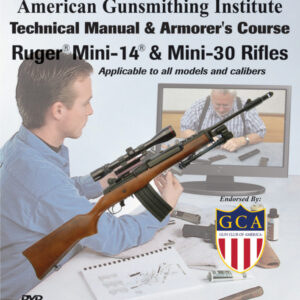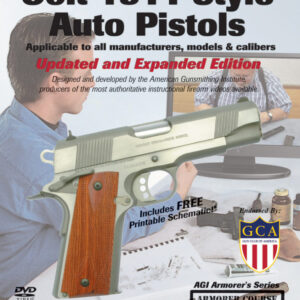Description
Bob Dunlap understands the design, function, and repair of Horace Smith and Daniel Wessons masterpiece, the modern cartridge revolver, as well or better than anyone else alive does today. If you want the quick course on how to get the Worlds Most Popular Revolver apart, back together, and operating as intended, then this course is for you (if you want the “long course,” look into our basic 108 hour Professional Gunsmith Course.)
Among the items covered are:
History
- Discussion of the Rollin White Patent of the Bored-through cylinder
- S&W Model 1, .22 Short, first modern revolver with self-contained cartridge
- Discussion of frame sizes and basic similarity of All Smith revolvers since the beginning of the 20th century
Design & Function
- Explanation and demonstration of the double action firing cycle with the side plate off.
- Timing issues between bolt stop and hand
- Bob shows the answer to the question; what does the hand do and how does it do it?
- Explanation and demonstration of the operation of the primary and secondary sears and the hammer cycle
- Explanation and demonstration of how the 2 hammer blocking safeties (side plate and rebound slide) work, and why if someone tells you “I dropped it and it fired!” They are lying.
- Explanation and demonstration of the single action firing cycle with the side plate off.
- Why the bolt also blocks the hammer with the cylinder pin out of its hole
- Cylinder lockup
- Evolution of the cylinder stop and hand over the past 50 years, 5 screw frame and 4 screw frame explained
- How changes in the side plate safety have evolved and its 2 most recent iterations
- A new bolt blocking slide safety is shown
Disassembly
- Extensive disassembly, parts not removed have removal described, including barrel and front sight
- End shake described
Cleaning & Lubrication
- AGI cleaning & lubrication methods shown, along with the reasons for their use
Reassembly
- Making sure you have no parts left over
Common Problems
- Right and left Sing explained
- Getting the hand to peep through the window when it should, and get out of it when it must
- Sear Click, what it is, why you do not want it, and how you get rid of it
- How over-fixing Sear Click can lead to Transitional Bind, and how you fix your fix
- Does the cylinder stop go into each cylinder recess when it should (time up), and how to make it do so
- The dangers of Push Off and how to correct that too
SPECIAL BONUS Basic Smooth & Tune
- What to do if the bolt stops before the center pin, and why
- How & What to smooth and how far to go
- What NOT to stone and why
- What to be very careful of in the earlier stainless steel revolvers
- What angles need to be maintained
- What to do AFTER the stoning and reassembly
Accessories
- What to use
- What to avoid and why
If you noticed how often the terms explanation, and visual demonstration are used, you may be getting some idea of why this course is necessary for any Smith & Wesson revolver owner, or someone who intends to be.




